Research activities
Our experimental research activity encompasses various novel quantum materials in the areas of frustrated quantum magnetism, unconventional superconductivity and strong spin orbit coupling materials. Our experimental expertise combines different spectroscopic techniques (NMR, μSR, ARPES and INS) complemented by bulk measurements (transport, magnetization and specific heat).
Frustrated magnetism and Quantum Spin Liquid
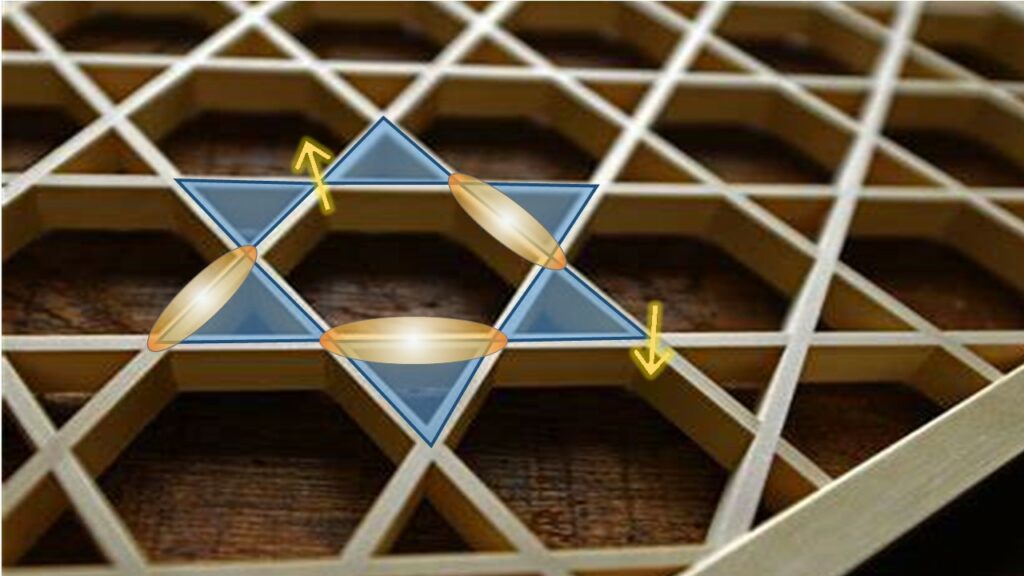
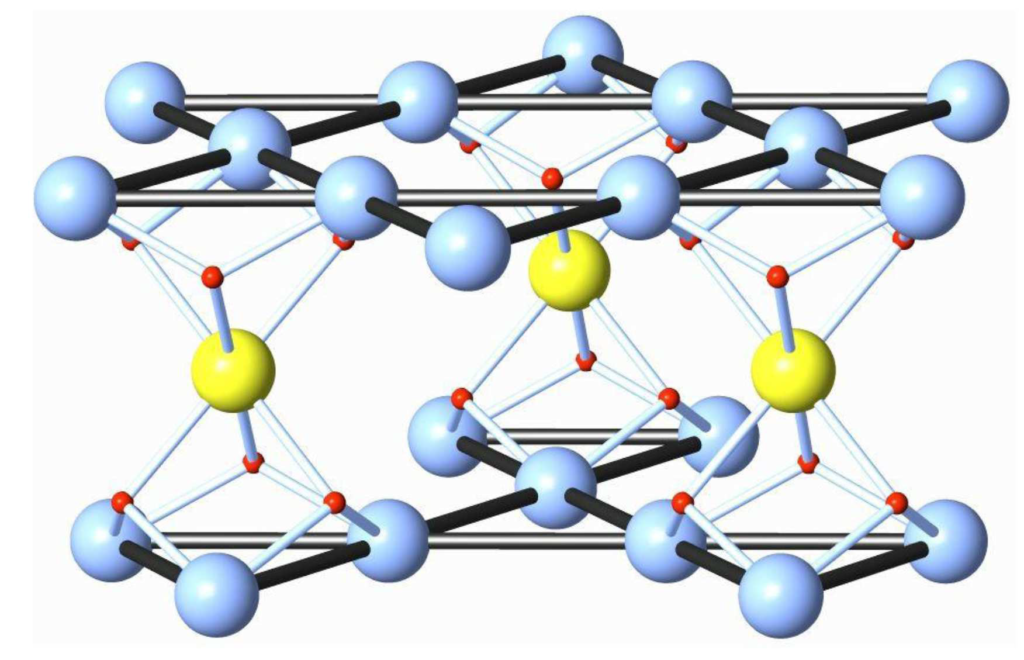
Spin liquids represent an exotic class of quantum matter where, despite strong exchange interactions, spins do not order or freeze down to zero temperature. While well established in 1D for e.g. the Heisenberg spin S= ½ antiferromagnetic chain, it has been recognized that in higher dimension, frustration is the major ingredient to stabilize such a class of exotic states. Exploring this physics in a flourishing materials context over the past 10 years has been one of our central focus. In two dimensions, this physics is best represented by the now famous example of the Kagome Heisenberg AntiFerromagnetic (KHAF) Hamiltonian where the threefold combination of a reduced connectivity, of S=1/2 quantum spins and of frustration leads to a Quantum Spin Liquid (QSL) state with fractional excitations. The problem of a Heisenberg Hamiltonian on that kagome lattice, despite its simple statement, is one of the most enduring and fascinating problems in condensed matter physics and quantum magnetism.
Quantum materials with strong spin-orbit coupling
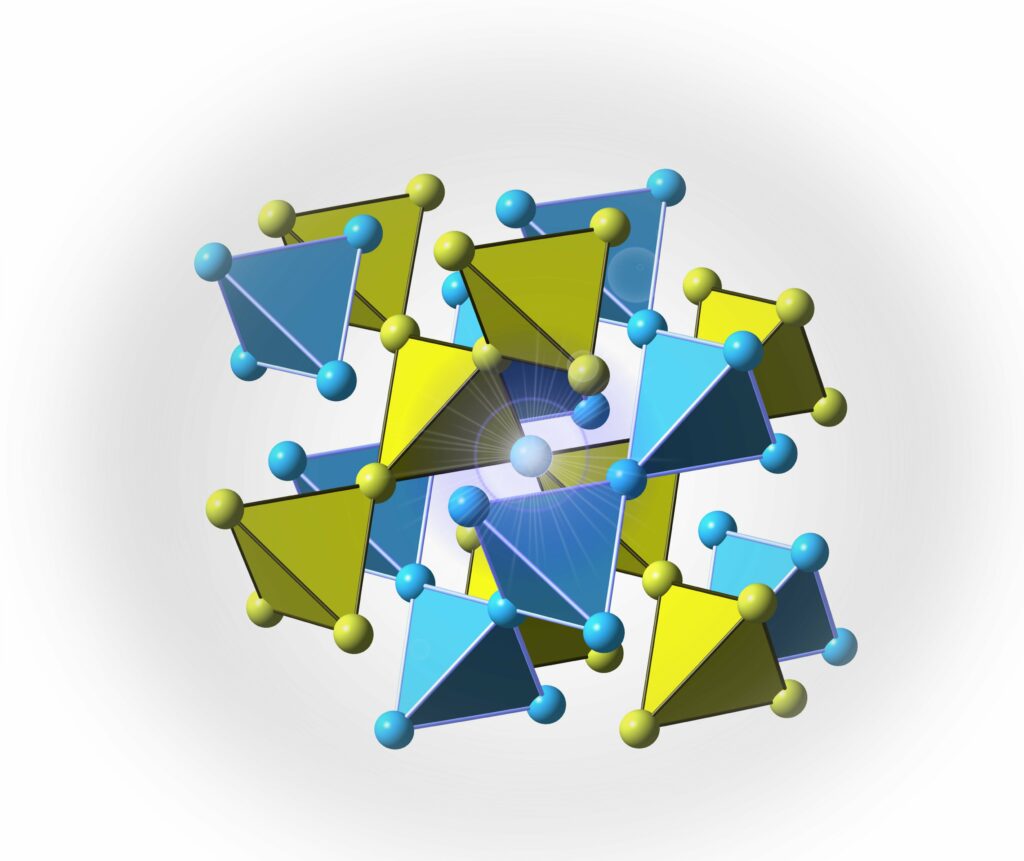
Pyrochlore frustrated magnetic structure made of corner-sharing tetrahedra.
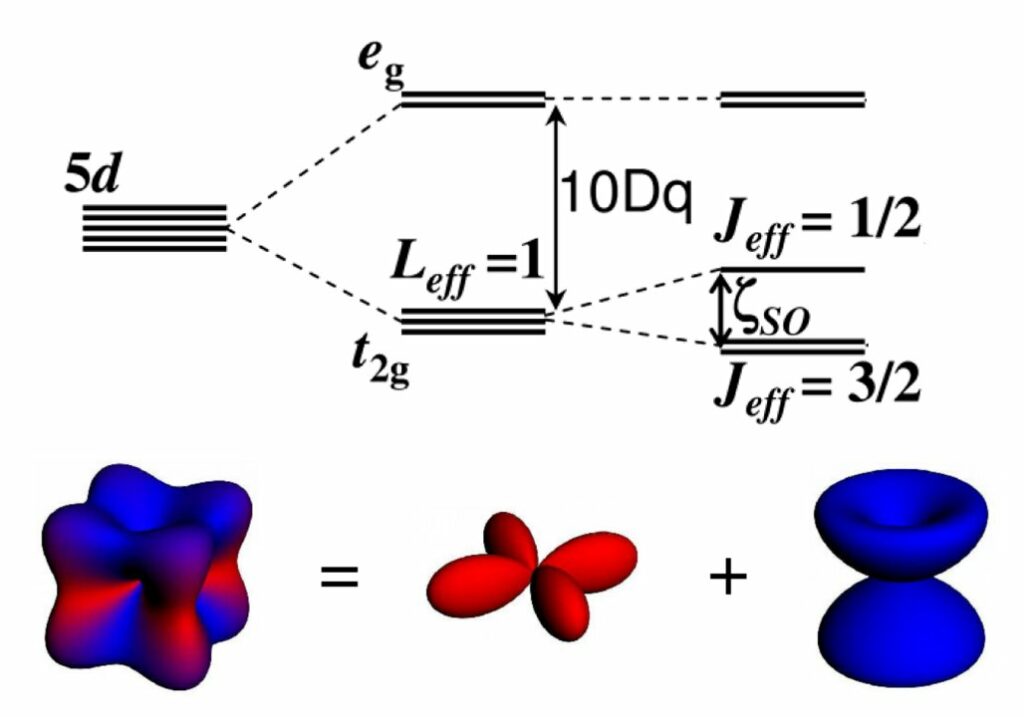
Although always present, the spin-orbit interaction lambda has long been neglected in correlated oxides, compared to other characteristic energies, like Coulomb repulsion U and kinetic energy W. An attractive possibility opened by the presence of a strong spin-orbit coupling is the formation of topological states. In our group we explore different structures that could allow the formation of interesting surface states, exhibiting Rashba splittings and/or spin polarization. ARPES is a very efficient tool to detect their presence.
Strong spin-orbit coupling can also generate effective S=1/2 quantum spins on a large variety of frustrated lattices (triangular, hyperkagome, pyrochlore…), enlarging the restricted opportunities offered by the Cu2+ (3d9, S=1/2) based compounds. Furthermore, a large SOC allows for the presence of anisotropic exchange interactions, which are necessary ingredients to stabilize some quantum spin liquid phases, such as in the 2D exactly solvable Kitaev model or in the Quantum Spin Ice model.
Correlated electrons and superconductors
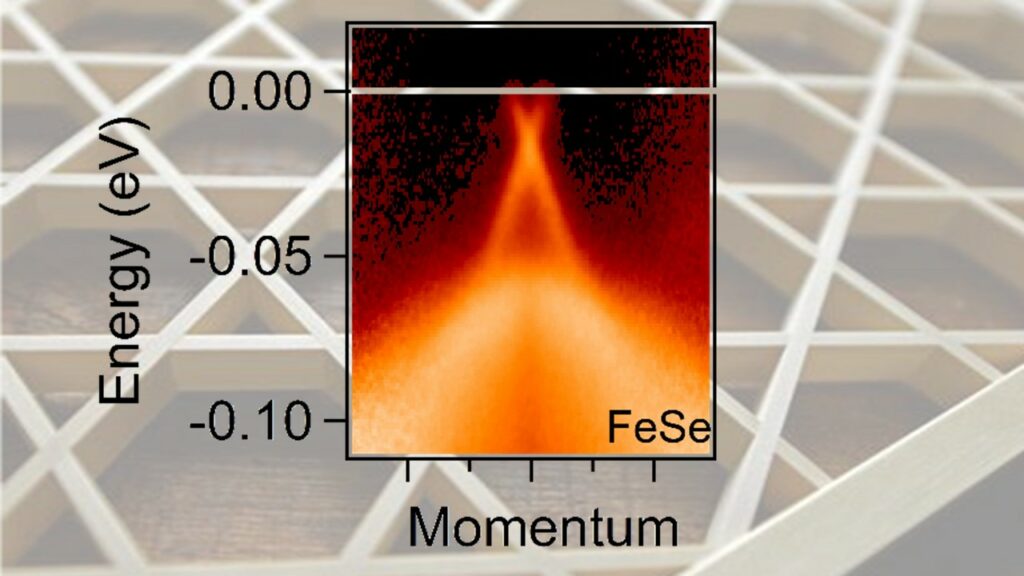
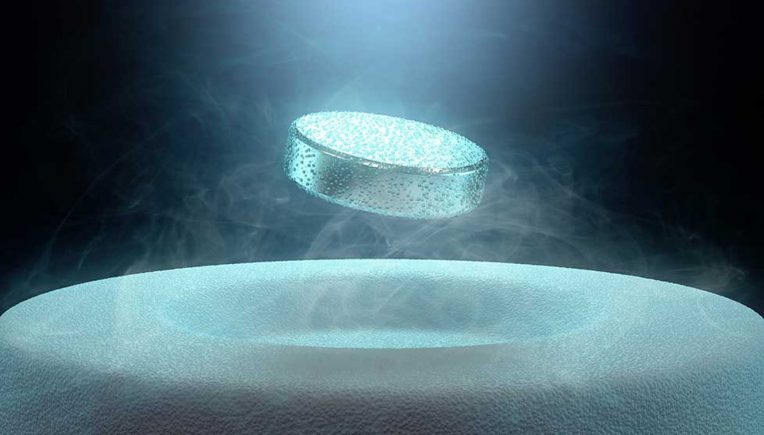
Correlated systems are materials where interactions between electrons are so strong that they cannot be treated by usual mean-field approximations. They give rise to many new and exotic properties, among which high temperature superconductivity in cuprates or colossal magnetoresistance in manganites close to metal to insulator transitions, are two famous examples. It is still a challenge to describe these states theoretically and to anticipate their properties.
We are interested in such systems, which we study and sometimes synthesize. In the past years, we have studied cuprates, cobaltates, iron-based superconductors and iridates.
Topology of metallic kagomé systems
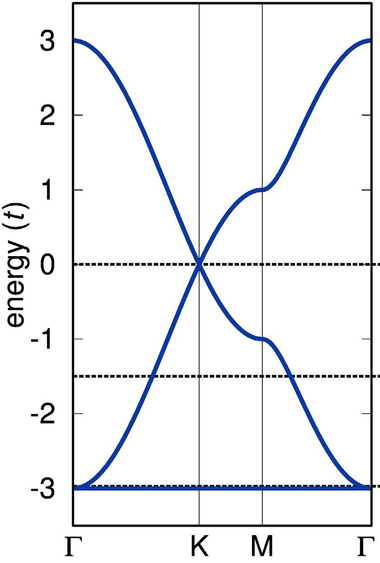
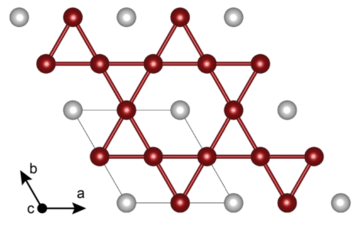
The kagomé network is famous for its frustration leading to spin liquid states. On the other hand, its geometry also creates a very interesting band structure from the point of view of topology, both for magnetic and electronic excitations. It features a Dirac cone coexisting with a completely flat band. Recently, several metallic kagome compounds have attracted attention (Fe3Sn2, Mn3Sn, Co3Sn2S2…). The coexistence of magnetism (ferromagnetism or antiferromagnetism) and this topological structure may lead to a very high anomalous Hall effect and potentially quantum normal Hall effect phases, which we have started to study by photoemission and NMR.
Fundings and Research Grants
Our research activities are fully funded through Universities, CNRS and European research grants as listed below.
National Grants
- LINK, Quantum Spin Liquids in Kagome Materials, ANR 2018, 60 months
- SOCRATE, New correlated electronic states emerging from strong spin-orbit coupling: the case of iridates, ANR 2015, 42 months
- SPINLIQ, Liquides de spin frustrés, ANR Blanc 2012, 36 months
- HFM, Physique de basses énergies des systèmes magnétiques géométriquement frustrés, ANR Jeune Chercheur 2009, 36 months
Regional – PIA Grants
- SUNSET, Cargese School, LABEX PALM 2017
- QUANTUM PYROMAN, Quantum spin liquid in frustrated pyrochlore magnets, LABEX PALM 2017
- CHIRAL, muSR scientific experimentation, LABEX PALM 2016
- SOC, Novel electronic states induced by large spin-orbit coupling, PALM 2015
- MATRACOB, Magnetism and transport in cobaltates, PALM 2014
- CORPES15, Colloque correlation et photoemission, PALM 2014
European & international Grants
- Contract PHC Proteus « Spin-Liquid Ground State Of Quantum Kagome Antiferromagnets From a Local-Probe Perspective » 2015-2016 (F. Bert/ A. Zorko)
- COMPETE, Competition-induced novel quantum states, FP7-PEOPLE-2013, 24 months
